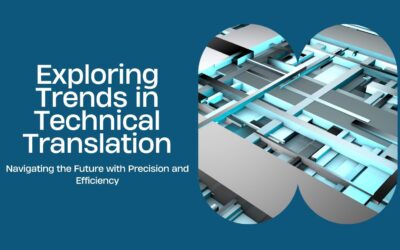Explore the world of technical translation and discover the critical role of quality assurance in ensuring precise communication across diverse industries. From challenges posed by complex terminology to innovative strategies and tools, this article provides insights into maintaining accuracy and reliability in translated technical content.
Exploring Trends in Technical Translation
Discover the transformative trends shaping technical translation. From the rise of machine translation and continuous localization to the crucial role of human expertise, navigate the evolving landscape for precise, efficient, and culturally relevant global communication.
The Crucial Role of Terminology Management in Technical Translation
In the field of technical translation, effective terminology management stands as a cornerstone for success. This article delves into the strategic use of glossaries, collaborative tools, and client collaboration by translation agencies to ensure precision, consistency, and ultimately, client satisfaction.
The Art of Translating Technical Manuals: Best Practices
In a globalized world, translating technical manuals accurately is essential. This article dives into the complexities of technical translation, offering insights on handling jargon, maintaining cultural sensitivity, and simplifying complex sentence structures. Learn how subject matter expertise, terminology management, and ongoing training play a crucial role in achieving precision and clarity in technical documentation translation. Explore the art of conveying complex technical information to a global audience effectively.
The Art of Technical Translation: Bridging Language Gaps in the Digital Age
Technical translation plays a pivotal role in breaking down language barriers. This article delves into the art of technical translation, discussing the challenges, innovations, and adaptations professionals employ to navigate the rapidly changing terrain. From software localization to complex technical documents, discover the intricacies of this vital discipline.
The Art of Simultaneous Interpretation. How It Works and Why It Matters
Simultaneous interpretation plays a vital art in today’s globalized world, bridges language gaps. TrueLanguage excels in delivering seamless, accurate communication.
Globalization, Cultural Awareness, Translations, and AI
A discussion of globalization, cultural awareness, the translation process, and the use of artificial intelligence in translations.
The Management of Terminology in Translations
A company-approved glossary or list of terminology is crucial for products and processes. Equivalent terms in all target languages should also be established. Proper terminology management is essential in a professional localization/translation process to ensure consistent language usage in organizational content. This article discusses the keys to m managing terminology in English as well as the best practices for terminology management in translation.
What is Terminology in Translation?
Terminology in translation is the use of specialized language and words that are used in a particular subject or context. It is critically important for a translator to have a deep understanding of the subject matter, and to have a working knowledge of the terminology used, to accurately convey the meaning of the source text into another language. This article discusses how to compile, store, and share terminology for translations and goes over the sizable benefits.









